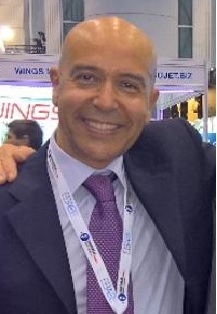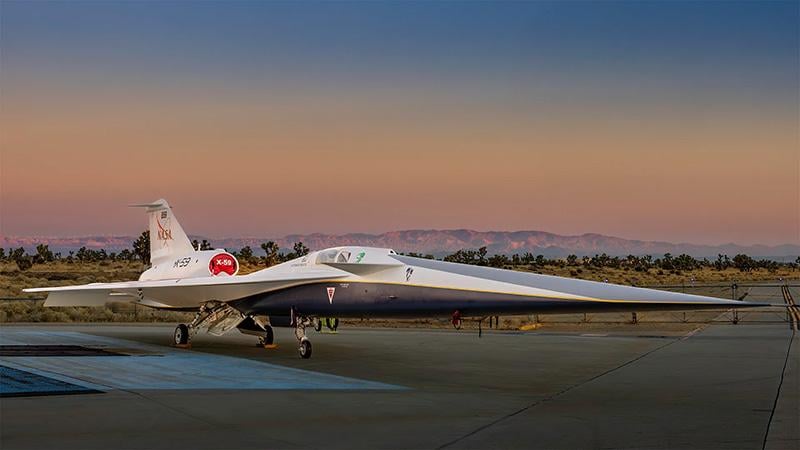NASA Chief Voices Support For Supersonic X-59 At Paris Air Show
Details
More Products & Services
Products & Services
Aerospace | Aviation Week Network
Aviation Week Network
https://aviationweek.com/themes/custom/particle/dist/app-drupal/assets/awn-logo.svg
Home - Aviation Group Marketing
Aviation Week Network
120 data points on over 156,000 commercial and business aviation aircraft, including military transports. Discover the most trustworthy resource for the complete aircraft history, plus ad hoc reports, month-over-month trend analysis and details on expected deliveries through 2050.
People

Andrea Rossi Prudente
Aviation Week Network

Anthony Lim
Aviation Week Network
Sales director

Becca Balmes
Aviation Week Network

Belinda Tan
Aviation Week Network

Brian Everstine
Aviation Week Network
Editor

Eddie Krankowski
Aviation Week Network
Assistant Manager, Tradeshows

erving dockery
Aviation Week Network

Lisa Tan
Aviation Week Network
Senior Marketing Manager

Mark Thomas
Aviation Week Network
Description
LE BOURGET—Despite President Trump's recent executive order directing the FAA to lift the long-standing ban on overland supersonic flight, the X-59 low boom demonstrator remains highly relevant, says NASA's acting administrator.
Although running years behind its original schedule, the NASA aircraft is still expected to play a key role in helping ICAO and the FAA develop a noise certification standard for sonic booms that could clear the way for legal overland civil fight at higher supersonic speeds.
“We're very proud of that particular mission in aeronautics,” acting Administrator Janet Petro tells Aviation Week in an interview at the Paris Air Show. “The X-59 program is going to revolutionize how you can do supersonic flight and we will be the first ones to have done that without the disruptive sonic boom. So, I'm feeling very positive about that program,” she says, adding that preparations are being finalized for the start of test flights.
But while the X-59—one of the agency's marquee X-plane projects—remains a fully supported and committed program, the future of some other key aeronautics research efforts are in doubt, such as electrification and small core turbine technology. Despite looming budget cuts, NASA aeronautics is being directed to pivot to developing revolutionary propulsion technology for commercial aviation.
The task is being orchestrated by Robert Pearce, associate administrator for NASA's Aeronautics Research Mission Directorate, Petro says. “He was coming to the Paris Air Show, but we had a discussion at the last minute in which he said, ‘I feel it would be better if I stay back here and work with the teams at NASA so we can figure out the answers to that question.' What are the research and the focus areas in terms of technology development that they need to focus on to enable revolutionary propulsion?”
Petro adds that NASA is working closely with its main industry partners on re-shaping programs to meet the research agenda. “They're really renowned as world leaders in research and development,” she says, “so I know they're going to make good choices, but he was going to work with a number of his research and aeronautics centers back in the U.S.”
“We are looking to maintain American leadership in all domains, including aeronautics,” she adds. “So he will make those choices, obviously hypersonics [is a priority], and we are working with the Department of Defense and others as that is high on the administration priority list, and of course, the X-59. But for the smaller ones in there, they will have to make some tough choices. They have a lot of industry and academic partners, so they'll work with them and maybe they can fill some gaps also.”
Petro acknowledges that Congress has the final say on NASA's budget and that some of the deep cuts proposed by Trump could be blocked by appropriators on Capitol Hill. “We're going to follow the president's and administration's priorities, and Congress will appropriate the budget that we will execute to,” she says.
Although running years behind its original schedule, the NASA aircraft is still expected to play a key role in helping ICAO and the FAA develop a noise certification standard for sonic booms that could clear the way for legal overland civil fight at higher supersonic speeds.
“We're very proud of that particular mission in aeronautics,” acting Administrator Janet Petro tells Aviation Week in an interview at the Paris Air Show. “The X-59 program is going to revolutionize how you can do supersonic flight and we will be the first ones to have done that without the disruptive sonic boom. So, I'm feeling very positive about that program,” she says, adding that preparations are being finalized for the start of test flights.
But while the X-59—one of the agency's marquee X-plane projects—remains a fully supported and committed program, the future of some other key aeronautics research efforts are in doubt, such as electrification and small core turbine technology. Despite looming budget cuts, NASA aeronautics is being directed to pivot to developing revolutionary propulsion technology for commercial aviation.
The task is being orchestrated by Robert Pearce, associate administrator for NASA's Aeronautics Research Mission Directorate, Petro says. “He was coming to the Paris Air Show, but we had a discussion at the last minute in which he said, ‘I feel it would be better if I stay back here and work with the teams at NASA so we can figure out the answers to that question.' What are the research and the focus areas in terms of technology development that they need to focus on to enable revolutionary propulsion?”
Petro adds that NASA is working closely with its main industry partners on re-shaping programs to meet the research agenda. “They're really renowned as world leaders in research and development,” she says, “so I know they're going to make good choices, but he was going to work with a number of his research and aeronautics centers back in the U.S.”
“We are looking to maintain American leadership in all domains, including aeronautics,” she adds. “So he will make those choices, obviously hypersonics [is a priority], and we are working with the Department of Defense and others as that is high on the administration priority list, and of course, the X-59. But for the smaller ones in there, they will have to make some tough choices. They have a lot of industry and academic partners, so they'll work with them and maybe they can fill some gaps also.”
Petro acknowledges that Congress has the final say on NASA's budget and that some of the deep cuts proposed by Trump could be blocked by appropriators on Capitol Hill. “We're going to follow the president's and administration's priorities, and Congress will appropriate the budget that we will execute to,” she says.

Share
Recent Chats
Share via email
Future: handle WhatsApp here
Future: handle LinkedIn here
Future: handle Twitter here
SUBMENU HERE
Share via Chat
Copy Link

